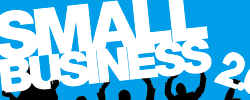
Popular Reading

Bank Finance
For an established bank customer of impeccable credit rating, a personal loan from his bank is usually a cheaper way of financing the purchase of a high-priced consumer durable than any of the forms of credit discussed in the earlier sections of this section.
A personal bank loan is a structured loan, on similar lines to the structure of any form of instalment credit. A personal loan may be arranged for any amount from £50 upwards and for any period up to five years. If the loan is required for the purchase of any item which, were it otherwise being acquired by hire purchase, would have been subject to a statutory minimum down payment, then the bank will expect the amount of the loan not to exceed the cost price less the down payment.
Interest is fixed for the whole period of the borrowing and is added to the amount of the loan at the outset. Flat rate of interest in early 2012 was usually 11% per annum on the amount borrowed, which makes the effective true rate range from 20.2% to 21.8%, depending on the precise period of repayment.
Example
Cost of goods 400
Cash loan required 360
Interest at 11% for 24 months 79.20
To be repaid in 24 monthly instalments of £18.30 439.20
True interest rate is 21.7% per annum
Had this been financed by credit sale (see page 80) the instalment would have been £19.05 instead of £18.30, and the true interest rate would have been 26.63%.
A bank is willing to grant a personal loan to a creditworthy customer for any purpose, provided only that the bank is satisfied that the facility is in the customer's own interests and is not facilitating his living beyond his means. For instance, holidays, car purchase, repairs to the roof of your house can all be financed by personal loan.
For occasional needs for short-term credit a bank might be willing to grant an overdraft facility, which is often easier and more flexible than a personal loan. It is suitable only for meeting the unexpected contingencies that beset us all from time to time when a particularly large unplanned expenditure has to be met.
An overdraft is a drawing out from your current account of sums of money in excess of what there is in it. In appropriate circumstances a bank manager may allow a customer to overdraw up to a stated limit and for a brief period of months, but the bank's agreement must be obtained beforehand. Cheques issued in excess of the credit balance may be returned unpaid if no arrangement for an overdraft has been agreed to.
Interest rate on overdrafts is always a fluctuating one, between 2% and 5% above current base rate. When base rate changes so does overdraft rate, the margin remaining the same. Interest is worked out on the daily balance, so with an overdraft the quoted interest rate is identical with the true rate of interest.

Other Sources of Credit
To accept the first form of credit that is offered by a supplier of goods is unwise without first checking that the cost of that credit is reasonable as compared with other sources of credit. In many cases it may be more economical to obtain a loan in money and to pay cash for your purchases. Advantage can then sometimes be taken of any cash discounts available, and in the case of expenditure on such things as road fund licences and rail season tickets you can often save more money over a year by taking an annual contract instead of a daily or weekly one, than it costs in borrowing the money for... see: Other Sources of Credit